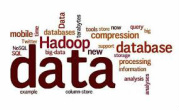
I have been reading about and practicing data analytics for several years now and I still don't get the hype that exists about the real value that it brings to its users. Granted that cloud, remote virtualization, Big Data, and advanced global networks have made it easier and cheaper to store and analyze petabytes of data that if tapped on effectively can produce facts that would help any cause. It is true also that analytics can bring the power of prediction and Business Intelligence can put information at one's fingertip in a format one can easily understand. No doubt that cloud can help any enterprise get the necessary resources it needs virtually in real time. I for one have seen the value of Customer Service Analytics to help drive customer retention and loyalty. With mountains of data, data quality and governance solutions, master data management and data integration is allowing organizations manage their information assets many times quite effectively.
There are a number of business domain areas where analytics has made a notable mark for consumers. Data analytics on online flight reservation systems for example has helped Southwest Airlines provide numerous popular flight paths to travelers at very affordable prices. On defense intelligence and terrorism, analytics has helped the intelligence community thwart attacks to a number of critical economic lifelines of the national infrastructure. In life sciences, analytics is marking advances in the human genome project and the cure for many diseases of an aging population.
So great...Data Analytics certainly does give us a plausible value. But, here is where I see it failing. The current state of analytics and Big Data is such that it is helping somewhat in commerce. However, how is it helping in the daily personal decision making of individuals as a whole? Think about it. How many spam ads and unwanted emails do you delete from your box every day? In Q2 2013, the number of spam emails grew 4.2% from Q1 2013 to a average total of 70.7%of email. When you purchase a product online, how much help do you get from vendors in comparing their products to the competition? There are consumer guide sites such as CNET that do provide some information on purchasing electronics, but can you say the same thing about selecting a good primary care physician? Can you honestly say that the data that the NSA gathered on you or other citizens will never fall in the wrong hands and do you trust the government that it never will? Can you think of a web site you can go to that gives you real measures on information leaks? Do retailers who have millions of credit card records on file give you any statistics on number of security/privacy incidents and does that data show how they compare with other retailers? Think about any of the recent customer support calls that you made for a product that you purchased. How does it compare to a similar experience say 5 or 10 years ago? If we took a survey that could measure weather a retailer is genuinely concerned about your issues, how would you think that retailer compares to say 10 or 15 years ago?
It seems to me that bottom line, the value of analytics is in providing quality valuable service or product and that in itself builds the trust between the provider and the consumer. So despite all the technology and gadgets in use today, we are still a long way from building that trust, and trust is the currency that we should be measuring success of analytics in any enterprise.
There are a number of business domain areas where analytics has made a notable mark for consumers. Data analytics on online flight reservation systems for example has helped Southwest Airlines provide numerous popular flight paths to travelers at very affordable prices. On defense intelligence and terrorism, analytics has helped the intelligence community thwart attacks to a number of critical economic lifelines of the national infrastructure. In life sciences, analytics is marking advances in the human genome project and the cure for many diseases of an aging population.
So great...Data Analytics certainly does give us a plausible value. But, here is where I see it failing. The current state of analytics and Big Data is such that it is helping somewhat in commerce. However, how is it helping in the daily personal decision making of individuals as a whole? Think about it. How many spam ads and unwanted emails do you delete from your box every day? In Q2 2013, the number of spam emails grew 4.2% from Q1 2013 to a average total of 70.7%of email. When you purchase a product online, how much help do you get from vendors in comparing their products to the competition? There are consumer guide sites such as CNET that do provide some information on purchasing electronics, but can you say the same thing about selecting a good primary care physician? Can you honestly say that the data that the NSA gathered on you or other citizens will never fall in the wrong hands and do you trust the government that it never will? Can you think of a web site you can go to that gives you real measures on information leaks? Do retailers who have millions of credit card records on file give you any statistics on number of security/privacy incidents and does that data show how they compare with other retailers? Think about any of the recent customer support calls that you made for a product that you purchased. How does it compare to a similar experience say 5 or 10 years ago? If we took a survey that could measure weather a retailer is genuinely concerned about your issues, how would you think that retailer compares to say 10 or 15 years ago?
It seems to me that bottom line, the value of analytics is in providing quality valuable service or product and that in itself builds the trust between the provider and the consumer. So despite all the technology and gadgets in use today, we are still a long way from building that trust, and trust is the currency that we should be measuring success of analytics in any enterprise.

 RSS Feed
RSS Feed